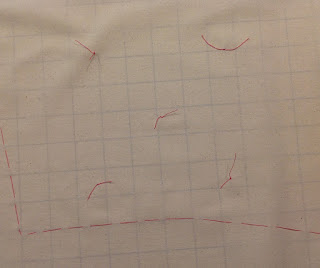As mentioned in the previous post I take extreme precautions with this final finishing part of the panel by stitching lengths of waste stabiliser all round the edge of the panel. This not only gives the scissors something solid to cut through but also provides a platform to mark out the correct distance from the boundary stitch. After the line has been drawn I stitch it with a red thread which is easy to see when cutting away the excess organza.
I find it invaluable to make detailed notes of the processes I use as it is very easy to forget exactly how I achieved the end result of a project. It is a discipline that I have adopted since my degree years at Winchester School of Art.
It was very satisfying cutting away the excess fabric and finally seeing how this panel will hang. The lace panel has also been trimmed but it is a very difficult piece to photograph, so I hope it will be easier to work with when I have all the panels together ready for the final photoshoot.
The lovely jute twine has made a great rope for the last panel especially when I decided to soften it by soaking it in a soft washing liquid before attaching it to the organza.
I've decided to use the the driftwood sticks that I found for hanging the panels as it very simple and and will work well with the jute twine that I've used for the rope on panel 3. I've used a mock panel here with pieced organza waste.






















































